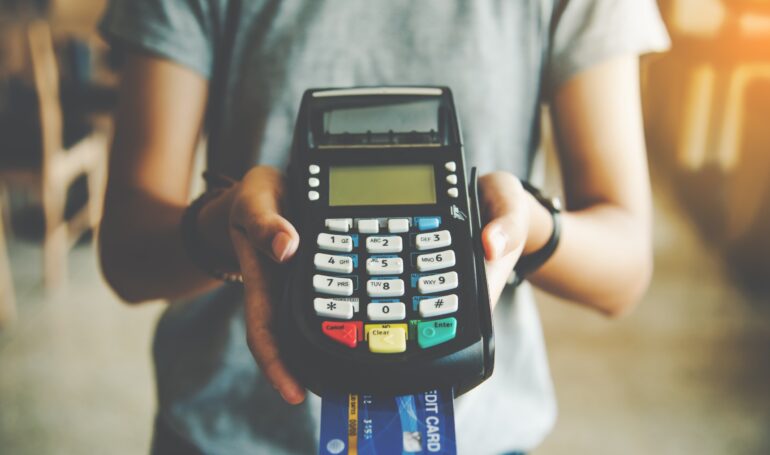Takeaways
- Paying off credit card debt is a top financial goal for many credit card holders.
- American households have multiple credit cards with thousands of dollars outstanding.
- The best debt repayment strategy is a matter of personal preference and habit-building.
- Reducing credit card debt will boost your net worth and free up your cash flow.
- Tracking your progress is integral to keeping yourself accountable for your goals.
Credit card debt is at a record-breaking number. At the end of 2022, credit card holders held over $980 billion in credit, with the average household balance averaging $7,279 among cardholders with unpaid balances. This balance can get away from even the most well-intentioned consumers.
In today’s economy, credit cards are a ubiquitous form of payment. To pay for virtually anything, you need a credit card. Some businesses have even taken the step to go completely cashless. Understanding your credit score and managing your credit card debt has never been more vital.
Without a financial plan or financial goals, it can be easy to rely on your credit cards too much. Heavy credit utilization can lead to credit card entanglement, snaring you into hyper-consumption. Overspending can leave you underpaying credit card bills or only paying the minimum balance. Once this happens, credit card debt can start to feel overwhelming.
If you are struggling with paying off your credit cards, here are seven steps to help you regain control of your finances and eliminate your credit card debt.
1. Understand Your Credit Card Debt
If your credit card debt is controlling your life, you need to understand the reason you are relying on credit cards too much in the first place.
Self-Assessment: Credit Card Utilization
- What purchases led you to use your credit cards too much?
- Are credit cards part of my financial goals?
- Did you use credit cards because of poor financial planning?
- Do I understand how credit cards work?
- Where do you use credit cards the most?
There is a reason you have too much credit card debt. To help you get your credit card debt under control, list out all your credit card balances. Once this is complete, analyze your credit card statements and highlight purchases outside of your monthly budget. Tally the highlighted purchases and eliminate these expenses from your financial diet.
Smart Money -> What is Credit Utilization?
To eliminate credit card debt, you need to get a grip on eliminating purchases that are not part of your budget. Credit cards can be used to your financial advantage. But to eliminate credit card debt, you need to choose a debt repayment strategy.
2. Choose A Payment Method
If you want to tackle your credit card debt, you need to understand the two schools of thought for paying off credit card debt.
Debt Snowball Method
The debt snowball method is a debt repayment philosophy that utilizes small wins to give a psychological boost when paying off your credit card debts over time. The debt snowball method advocates listing all your credit card debts in ascending order (starting with the smallest balance first) regardless of interest rate.
The next step is to begin paying off the smallest balance first and let the momentum of the debt snowball take effect. Once you pay your smallest debt, progressively work down your list of debts while eliminating the highest balances last. The debt snowball method harnesses positive psychology by capitalizing on momentum to eliminate debts.
Avalanche Method
By contrast, the avalanche method focuses almost exclusively on paying off credit card balances with the highest interest rate first because the avalanche method advocates for eliminating your highest cost of debt first.
In this method, you start with your credit card balance with the biggest interest rate, regardless of your credit card balance. Then, begin paying off that credit card, focusing on eradicating the debts with the highest cost of capital.
3. Create a Flash Budget
Once you have determined what repayment philosophy to adopt, the next step is to create a budget. If you already have a monthly budget, then refer to that. However, if you don’t have a budget, it is time to create a flash budget, an abbreviated version of your more detailed monthly budget. A flash budget provides a financial snapshot to help you eliminate your credit card debt.
Smart Money -> Create a Budget in 7 Steps. Here's How.
Start by analyzing your monthly expenses. List your fixed costs or expenses which don’t fluctuate from month to month. These could be items like your rent, mortgages, or insurance payments. Once you have your fixed costs summarized, list your variable expenses or costs that fluctuate based on your level of consumption. Variable expenses are expenditures like food, transportation, clothes, or utilities.
Smart Money -> 14 Wacky Ways to Cut Expenses Quickly
Next, identify all your sources of income. Include income from your employer, side hustle, freelance work, or investment income.
Smart Money -> How to Advance Your Career With 9 Simple Steps
The final step is to subtract your expenses from your income. Use your discretionary income to pay off credit card debt each month. You can calibrate your budget to increase your debt repayments each month.
4. Pay More Than the Minimum
One of the biggest financial mistakes people make with credit cards is purchasing something outside their monthly budget or an item they cannot afford.
You get stuck in a cycle of trying to pay off your credit card balance each month. If you have other expenses, it is easy to get caught in the habit of only paying your monthly minimum payments. Only paying the monthly minimum will keep you in credit card debt.
If you are paying only minimum monthly balances, you are paying a very high interest rate on your credit card debt. And if your goal is to be credit card debt-free, you must pay more than the minimum each month. By paying more than the monthly minimum, you can whittle away your credit card debt and reduce the interest you pay each month.
5. Track Your Success
Behavioral modification is one of the most critical aspects of eliminating credit card debt. You can reduce your financial anxiety and brighten your financial future by controlling your credit card debts. One of the best ways to do this is to track your financial success.
Journaling about your financial journey can improve your financial clarity, provide a tangible source of progress, and allow you to solve problems. Whether you are tracking your finances with pen and paper or more sophisticated tools like Mint or Personal Capital, knowing where your money is going is critical to financial success.
Personal finance is much more than numbers. It is your relationship with money. Tracking your progress toward eliminating your debt will help you contextualize where you are on your financial journey and give you larger aspirations to secure a more solid financial footing by building an emergency fund or investing for your future.
6. Pay With Cash
One of the fastest ways to stop your credit card spending is to stop using your credit cards. While harnessing your credit card debt under control, start using cash for all your transactions.
The reason that you want to start paying with cash is twofold:
- Make Your Purchases Tangible – Pulling your cash to pay for anything makes you think twice about the purchase. Does this fit into your budget?
- Increase the Pain of the Transaction – Credit cards are easy to use. Their transaction pain is extremely low because you don’t feel the pain of purchase until you receive your credit card bill. Paying with cash reverses this order and makes you viscerally confront how much things cost upfront.
Increasing the pain of the transaction is a smart money habit. With proper financial planning and sticking to your budget, you can easily begin the process of paying with cash. Plus, paying with cash can be fun. This small change can stem your spending.
Paying with cash will give you a clear view of where your money is going each month. Visibility into your daily spending is critical to long-term financial success.
7. Celebrate Your Wins
Depending on your credit card utilization, eliminating your credit card debt can take months or years. During that time, you will be making sacrifices to decrease your expenses and find ways to increase your income.
Celebrating your success along your journey is critical. You want to create rewards (big and small) when you have started achieving success. That could include going out to the movies after eliminating your first credit card debt or going on a vacation once you are debt-free. Calibrate the reward based on where you are in your repayment journey but give yourself the gift of celebration. Enjoying the process will help you achieve your long-term financial goals.
After you have eliminated your credit card debt, it is vital to share your success.
Whether it is helping someone you know eliminate their credit card debt or helping them think through their debt-elimination strategies, mastering the process of controlling your credit card debt is vital.
Utilizing prevention systems to control your credit card spending upfront and ensuring you get the best credit card possible are great tools to help your financial outlook.
Smart Summary
Paying off your credit card debt is one of the fastest ways to improve your finances. Financial experts argue that decreasing your debts and increasing your assets will boost your net worth and improve your overall financial hygiene. Controlling your spending and reducing frivolous spending is one of the quickest ways to curb credit utilization. Start the process of reining in your finances by creating smart money habits today.









